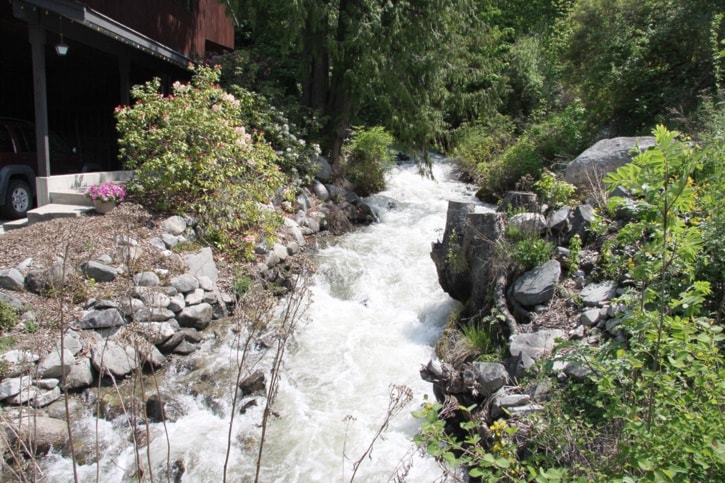Concerns around increasing river flow have subsided as weather in the region began to cool down on Wednesday.
After several days of warmer than normal weather, the BC River Forecast Centre released a high stream flow advisory for Nelson region.
“We’ve had a good three or four days of hot weather. It’s cooled down a bit today [Wednesday], but we’ve seen a steady ramping up of flows particularly in the medium sized rivers like the Salmo, the Slocan and the Moyie,” said Dave Campbell, head of the BC River Forecast Centre.
Even though an advisory had been issued, Campbell said they were not concerned about possible flood risks.
“We started fairly low earlier in the season so despite the fact we’ve seen these rises we’re still not up at a level where we’re concerned and all the systems are below the average annual peak flow. The rivers can handle that kind of flow quite well,” he said.
The hot weather earlier this week has not yet worked its way through the local river systems and Campbell said the rivers will likely peak out and then drop down in the coming days.
“They are certainly flowing fast and high but not at concern levels,” he said.
Campbell said there is still a lot of snow at higher elevations in the mountains and the critical time for the river systems is from the end of May into early June.
“For some of them I think it may have passed when you look at some of the creeks on the North Shore, we saw those peak out when we had that warm weather several weeks ago,” he said. “On from here we still have a lot of snow at the higher elevations and we’ve only started to melt that off.”
Rivers like the Slocan will likely see peak levels later in the season.
“The thing to watch will be whether they drop from here, which is what we had after the last event earlier in the year,” said Campbell. “The more they drop the more capacity they have to buffer from future weather events. That will be key. We’re just watching the weather over the next four to six weeks.”
Reflecting on 2006 when the region saw the Slocan River flood, Campbell said had the area experienced more hot weather “things would have gotten interesting.”
